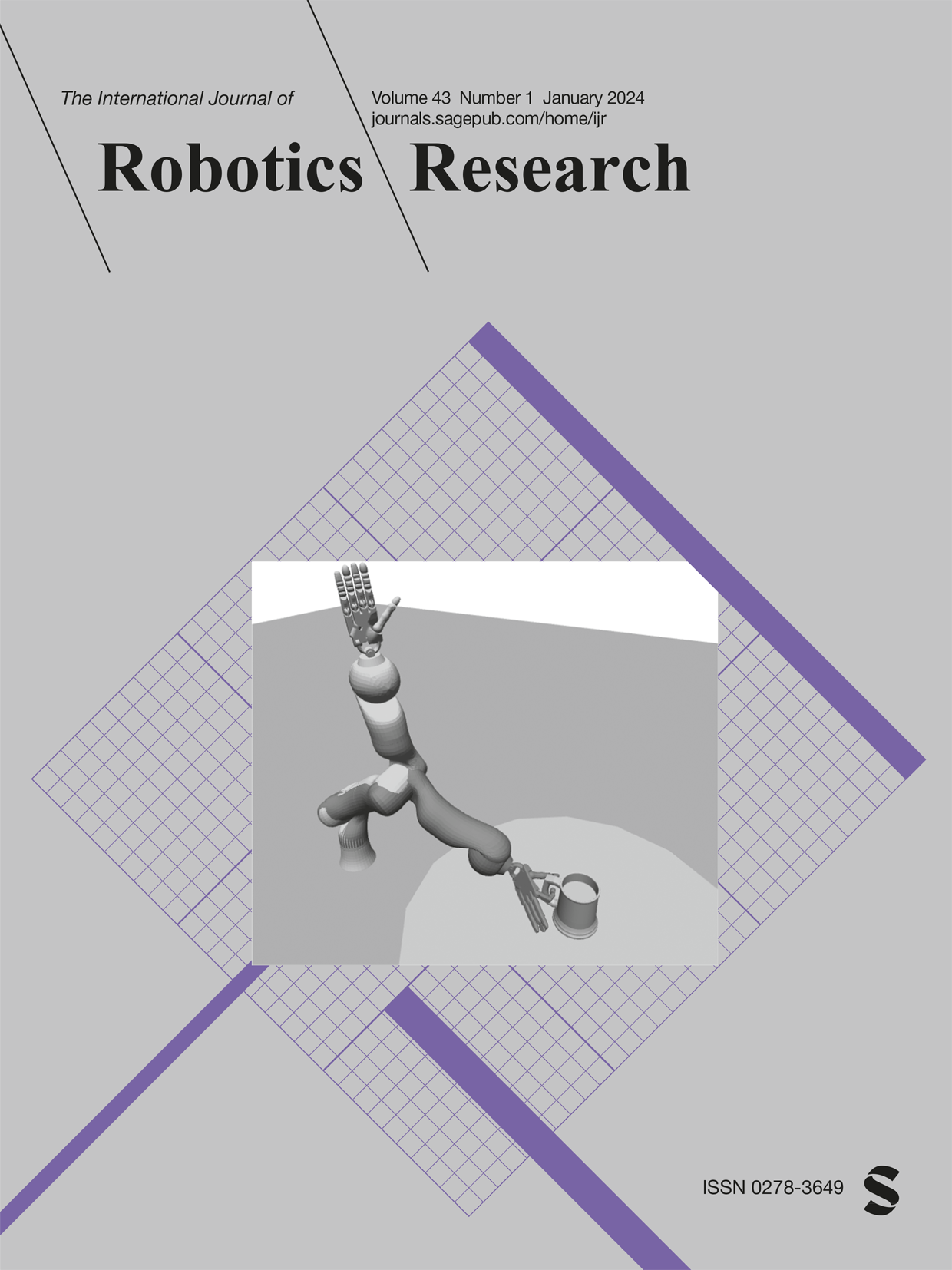Simple kinesthetic haptics for object recognition
IF 5
1区 计算机科学
Q1 ROBOTICS
引用次数: 1
Abstract
Object recognition is an essential capability when performing various tasks. Humans naturally use either or both visual and tactile perception to extract object class and properties. Typical approaches for robots, however, require complex visual systems or multiple high-density tactile sensors which can be highly expensive. In addition, they usually require actual collection of a large dataset from real objects through direct interaction. In this paper, we propose a kinesthetic-based object recognition method that can be performed with any multi-fingered robotic hand in which the kinematics is known. The method does not require tactile sensors and is based on observing grasps of the objects. We utilize a unique and frame invariant parameterization of grasps to learn instances of object shapes. To train a classifier, training data is generated rapidly and solely in a computational process without interaction with real objects. We then propose and compare between two iterative algorithms that can integrate any trained classifier. The classifiers and algorithms are independent of any particular robot hand and, therefore, can be exerted on various ones. We show in experiments, that with few grasps, the algorithms acquire accurate classification. Furthermore, we show that the object recognition approach is scalable to objects of various sizes. Similarly, a global classifier is trained to identify general geometries (e.g., an ellipsoid or a box) rather than particular ones and demonstrated on a large set of objects. Full scale experiments and analysis are provided to show the performance of the method.物体识别的简单动觉触觉
物体识别是执行各种任务时必不可少的能力。人类自然地使用视觉和触觉感知中的一种或两种来提取物体的类别和属性。然而,机器人的典型方法需要复杂的视觉系统或多个高密度触觉传感器,这可能非常昂贵。此外,它们通常需要通过直接交互从真实对象中实际收集大型数据集。在本文中,我们提出了一种基于运动力学的物体识别方法,该方法可以在运动学已知的任何多指机械人手中执行。该方法不需要触觉传感器,而是基于观察物体的抓取。我们利用一个独特的和帧不变的参数化抓取来学习对象形状的实例。为了训练分类器,训练数据在不与真实对象交互的计算过程中快速而单独地生成。然后,我们提出并比较两种迭代算法,可以集成任何训练过的分类器。分类器和算法独立于任何特定的机械手,因此可以对各种机械手施加影响。在实验中,我们表明,只需少量的掌握,算法就能获得准确的分类。此外,我们证明了物体识别方法可扩展到各种大小的物体。类似地,一个全局分类器被训练来识别一般的几何形状(例如,一个椭球或一个盒子),而不是特定的几何形状,并在一个大的对象集上进行演示。实验和分析表明了该方法的有效性。
本文章由计算机程序翻译,如有差异,请以英文原文为准。
求助全文
约1分钟内获得全文
求助全文
来源期刊
CiteScore
22.20
自引率
0.00%
发文量
34
审稿时长
6-12 weeks
期刊介绍:
The International Journal of Robotics Research (IJRR) has been a leading peer-reviewed publication in the field for over two decades. It holds the distinction of being the first scholarly journal dedicated to robotics research.
IJRR presents cutting-edge and thought-provoking original research papers, articles, and reviews that delve into groundbreaking trends, technical advancements, and theoretical developments in robotics. Renowned scholars and practitioners contribute to its content, offering their expertise and insights. This journal covers a wide range of topics, going beyond narrow technical advancements to encompass various aspects of robotics.
The primary aim of IJRR is to publish work that has lasting value for the scientific and technological advancement of the field. Only original, robust, and practical research that can serve as a foundation for further progress is considered for publication. The focus is on producing content that will remain valuable and relevant over time.
In summary, IJRR stands as a prestigious publication that drives innovation and knowledge in robotics research.

 求助内容:
求助内容: 应助结果提醒方式:
应助结果提醒方式:


